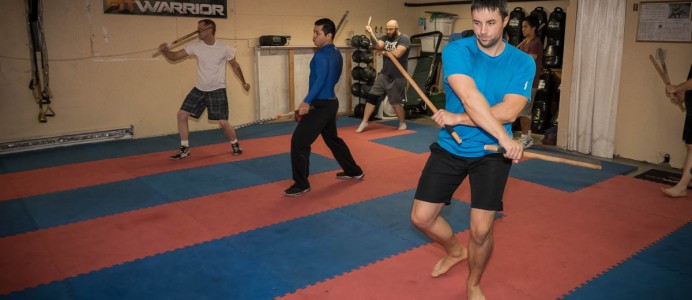Testing for the Spring Term is this Thursday, June 25. If you’ve ever gone through the process at the club before, you’ll know that we promote a low-pressure, informal atmosphere, much like at our classes. The curriculum at maelstrøm is taught around a quarterly term schedule, with roughly a theme for each of the seasons. Meant to guide the overall consistency of instruction, you’ll find on the white board in the class a list of forms and techniques that may be taught in the term. Instructors, of course, may not get through everything or may add material they find relevant. At the end of the term, the students have the opportunity to show what they’ve learned at testing
Many students find testing intimidating, but it’s designed to be anything but. The format is this: an instructor will give you a task for you to perform – alone or with a partner – on camera. The testing is made up of as many tasks that the time will allow for all the students to complete. It may be doing the 64-form, or the lock flow with a takedown, or any number of things covered during the term. No one cares if you can execute a technique perfectly; indeed, props are given for those who merely show up and give it their best. You’ll have a few minutes prior to being filmed to practice the technique. The entire thing could not be more relaxed as the instructors go around to film each of the students. If you hate being on the spot, don’t worry – other students are barely watching, since they’re concentrating on practicing for their own turn. Whether it’s your first class (we’ve literally had new students show up for testing unknowingly as their first class and still participate) or your hundredth, testing offers something for you. That’s why we stress that everybody should come out.
The purpose of testing is to document your progress. On the one hand, it gives our instructors a better idea of where you’re at. But the main goal is to give the student an idea of what they’ve learned. Capturing techniques on film is an excellent way to remember them years later, or to gain new insights on what you’re doing. The material is so rich that there may be certain techniques you literally will not see again for years. And for the ones that we practice all the time, you can see how much better you’ve gotten at them. The film is only available for you – you can ask the instructors at anytime for a copy of the footage.
You can also expect to be set some tasks that you may not have practiced, strictly speaking, in the term. This is to shift the focus away from memorizing and regurgitating techniques to the actual, applicable things you’ve learned. So you may be filmed just ‘playing’ (light sparring) with a partner, or to show some potential finishes mid-drilling cycle. Again, if you’re confused – we encourage improvising. That’s often when what you’ve really learned comes out!
Another purpose of testing is obviously ranking. Ranking in Pekiti-Tirisia really doesn’t matter until you get to Lakan Guro (student instructor) or Guro (instructor), and it’s never emphasized. n case I haven’t said it enough, our club is quite informal. But we know that students like to know where they’re at, and ranking is a handy way to measure it. If you have more questions about ranking in Pekiti-Tirisia, you can find it here (members only area – ask us for the password!). And you only really get to move up if you come out to the testing. Some people care a lot about this, some people not at all. It all goes back to why you are training.
If you have any questions or concerns, please let us know. There are some tips below to help you prepare. Otherwise, see you at testing!
Preparing for Testing
–Review the list of techniques that roughly form the term’s curriculum (find it here, or on the white board at the club). If you’re unsure about any, ask!
–Go over the techniques at home. Or do it in your mind on the bus. We also like practicing footwork at the bus stop.
–Remember that we all started somewhere. Be forgiving to yourself if you can’t get something right.
–Learn from your partners. Most of Pekiti-Tirisia involves drilling with a partner to get a particular concept ingrained in body memory. Since everyone has different body mechanics, it helps a lot to train with as many different partners as possible and to learn from them so that you can execute the technique with anyone.
–Ask questions in class! And don’t be surprised if there isn’t ‘one right answer’. In particular, ask ‘why?” – it’s always a good idea to understand the intention and rationale behind why we do things a certain way.
